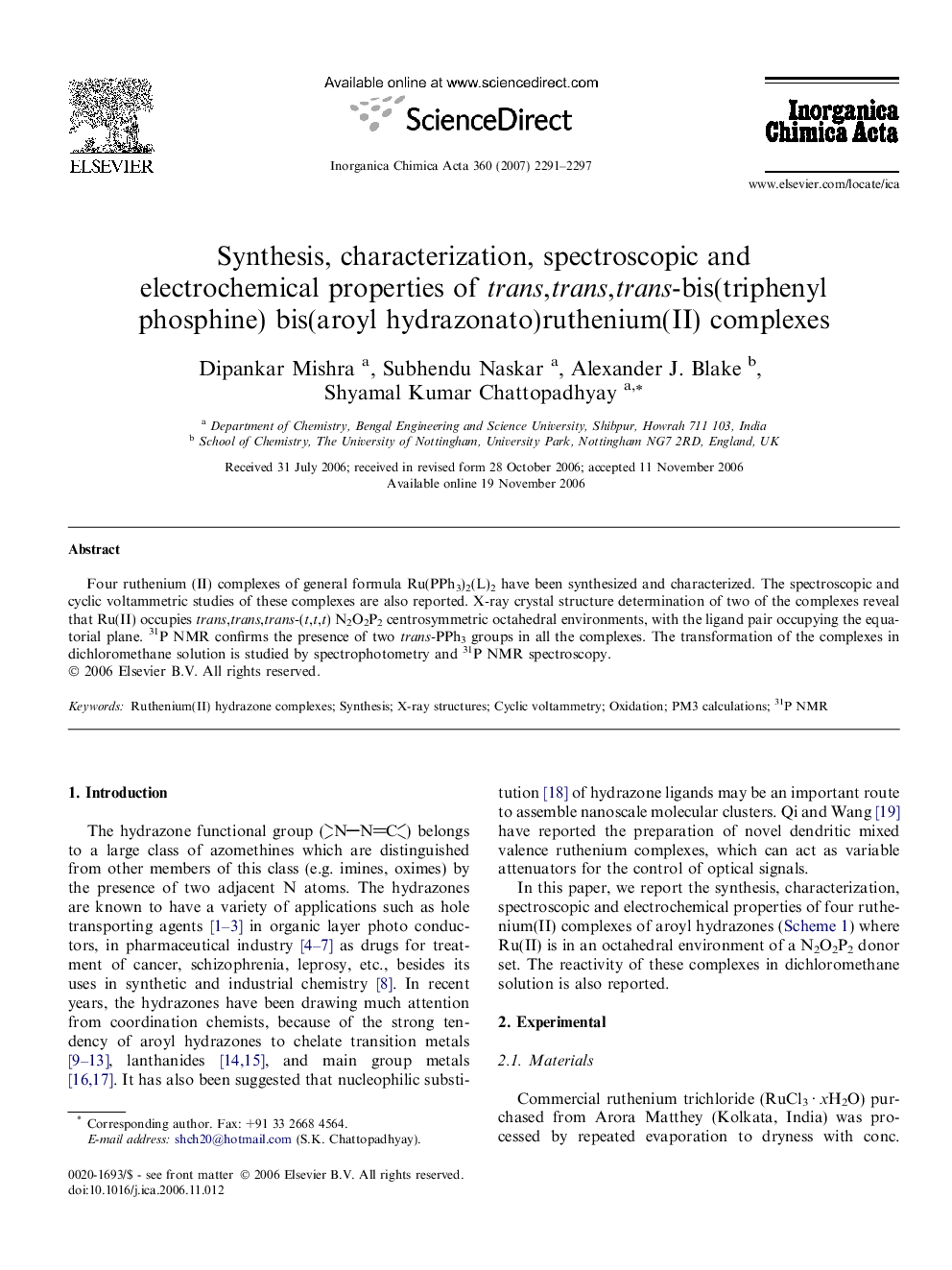| Article ID | Journal | Published Year | Pages | File Type |
|---|---|---|---|---|
| 1309763 | Inorganica Chimica Acta | 2007 | 7 Pages |
Four ruthenium (II) complexes of general formula Ru(PPh3)2(L)2 have been synthesized and characterized. The spectroscopic and cyclic voltammetric studies of these complexes are also reported. X-ray crystal structure determination of two of the complexes reveal that Ru(II) occupies trans,trans,trans-(t,t,t) N2O2P2 centrosymmetric octahedral environments, with the ligand pair occupying the equatorial plane. 31P NMR confirms the presence of two trans-PPh3 groups in all the complexes. The transformation of the complexes in dichloromethane solution is studied by spectrophotometry and 31P NMR spectroscopy.
Graphical abstractFour ruthenium (II) complexes of general formula Ru(PPh3)2(L)2 have been synthesized and characterized. The spectroscopic and cyclic voltammetric studies of these complexes are also reported. X-ray crystal structure determination on two of the complexes reveal that Ru(II) occupies trans,trans,trans-(t,t,t) N2O2P2 centrosymmetric octahedral environments, with the ligand pair occupying the equatorial plane. 31P NMR confirms the presence of two trans-PPh3 groups in all the complexes. The transformation of the complexes in dichloromethane solution is studied by spectrophotometry and 31P NMR spectroscopy. The Ru(III)/Ru(II) potential of the complexes was found to correlate linearly with the lone pair energies of the donor atom of the hydrazone ligands. It is demonstrated that Ru(II) complexes in an N2O2P2 donor environment prefers an all trans geometry.Figure optionsDownload full-size imageDownload as PowerPoint slide
